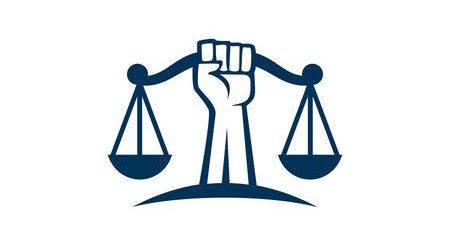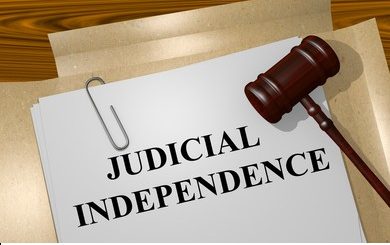How Contempt of Court in Uganda should be handled by Judicial Officers.

Contempt of court occurs where a person seeks to interfere with or subvert the court process by failing to follow orders issued by court or abusing the court process. It was defined by Justice Stephen Mubiru in the case of Florence Dawaru v Angumale Albino & Anor HCMA No. 0096 of 2016 to include Conduct that;
- Scandalizes or tend to scandalize, or lower or tend to lower the authority of any court; or
- Prejudices, or interferes or tends to interfere with, the due course of any judicial proceeding; or
- Interferes or tends to interfere with, or obstructs or tends to obstruct, the administration of justice in any other manner.
- It encompasses acts calculated to hamper the due course of a judicial proceeding or the orderly administration of justice.
It is a special offense provided for by Article 28 of the Constitution and the only offence whose particulars and punishment need not be prescribed by statute. Parliament can prescribe the rules and procedures followed during contempt of court proceedings but it can not abolish it or render it meaningless without constitutional amendment.
Parliament has not provided guidance on the procedure to be followed where court or a person seeks to hold a person criminally liable for Contempt of court. In civil proceedings where there is contempt in form of disobedience of court orders the parties promptly apply for the consequent orders. Theoretically the state can charge a person with contempt of court but what happens where the contempt takes the form of interference or obstruction of court proceedings in a civil trial and the state does not bring charges of contempt of court.
In Ivan Samuel Ssebadduka v Chairman Electoral Commission & 3 Ors (Presidential Petition No. 1 of 2020), the Supreme Court cited the petitioner for contempt of court. In the subsequent contempt of court proceedings arising from Presidential Election Petition No. 01 of 2020, In Re: Ivan Samuel Ssebadduka, the Court found that the petitioner had engaged in contemptuous conduct through his pleadings, affidavit evidence, and written communications.
The Court itself formally charged Ssebadduka with the offence of contempt of court and afforded him the opportunity to appear and show cause why he should not be found guilty and punished accordingly. During the hearing, the charges and particulars of the offence, as contained in his pleadings, affidavit evidence, and various written utterances filed in Court, were read out and explained to him. He appeared before the Court and astonished everyone by boastfully revealing that his actions had been a deliberate and he repeated the utterance that were the basis of the charge against him. He was found guilty and sentenced to three years of imprisonment by the Supreme Court. He effectively had no right of Appeal.
The Court paid lip service to the principle that the law of contempt is not meant to protect judges’ personal feelings or interests, and the constitutionally protected right to freedom of speech. The Court ignored the principle that contempt laws must be applied in a manner that respects constitutional rights. The Supreme Court led by the CJ feeling insulted by the utterances and disrespectful conduct of Ssebadduka decided to punish him. They chose to become the complainants, victims and investigators. The Justices assumed powers of the DPP with which they sanctioned the charges, prosecuted the matter, heard it and handed down the punishment. They became prosecutor and judge in their own case.
It is a bedrock principle of justice that no one shall be a judge in their own case. This principle dates back to at least 1605, when it was referenced by Sir Edward Coke in the English case of R v. Sussex Justices, ex parte McCarthy. In that case, Coke stated:
“The first rule is ‘nemo judex in causa sua’ or ‘nemo debet esse judex in propria causa sua’…that is, ‘no man shall be a judge in his own cause’.”
It’s also a fundamental principle of justice that Justice should always be seen to be done. This was established by Lord Hewatt who famously stated that “justice should not only be done, but should manifestly and undoubtedly be seen to be done” without bias or conflict of interest interfering in judicial decisions. He highlighted that even the appearance of impropriety should be avoided in legal proceedings.
Where the conduct in issue is directed at the judicial officers handling the matter, they must avoid the temptations to hear and decide it. Firstly, they can not be judges in their own matter. Secondly, justice must be seen to be done to protect the integrity of the justice system. The rule is so strict that a judicial officer who has heard a suit as a trial judge cannot be involved as a judge on appeal. For example, in the U.S. case of Arnett v. Kennedy (1974), the Supreme Court ruled that an administrative law judge could not preside over an appeal regarding their own prior decision against an employee. This was held to violate the nemo judex principle.
In situations where the conduct complained of is directed at the judge.
- The matter can be referred to the Director of Public Prosecution for investigations and prosecution or
- The court should appoint a special prosecutor to prosecute the matter.
- If the matter involves judges in an appellante court or any higher court such as The Supreme Court, it should be refered to a lower court.
- Where the matter involves a lower court, it should be refered to another lower court judge for determination.
Why should a judicial officer not be a judge in their own case or a case where they have an interest in the outcome or appear to have an interest in the outcome.
- It aims to prevent conflicts of interest and ensure fairness in legal proceedings. If someone has a personal stake in a case, they cannot objectively evaluate the matter.
- It applies to any adjudicatory body or individual making binding decisions that affect rights or interests of others. This includes courts, tribunals, arbitrators, administrative agencies, etc.
- The rule requires that the decision-maker is disinterested and independent regarding the issues and parties involved. Even the appearance of bias should be avoided.
- If a conflict of interest exists, the decision-maker must withdraw from the case. The parties involved are also entitled to object to a biased adjudicator under this rule
- Four years of IGG Beti Kamya drowned the Inspectorate of Government (IG) deeper into oblivion and irrelevancy but it Can be redeemed
- The Proposal to Make Magistrates Grade Ones Chief Magistrates is an efficient use of resources that will improve service delivery in Uganda
- If Magistrates Courts in Uganda are less competent and more prone to corruption does it mean that the poor deserve inferior justice to the rich.
- Women Members of Parliament (MPs) in Uganda are the most egregious discrimination against men in Uganda
- The UPDF Amendment Bill 2025. A proposed compromise that could protect political opponents of the ruling party.


